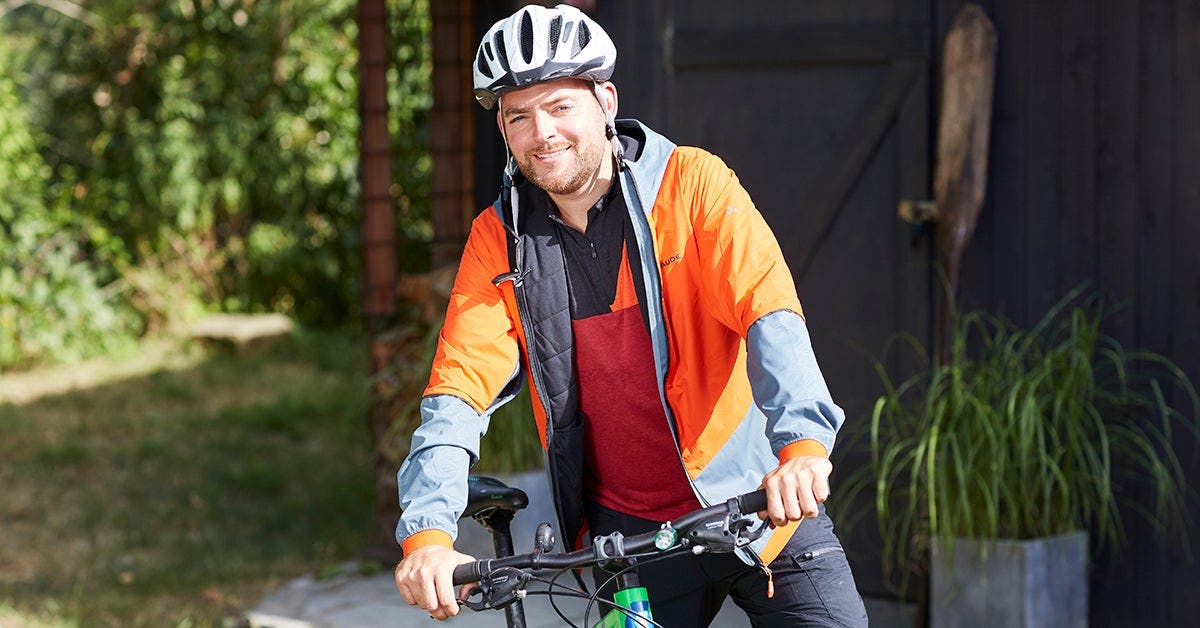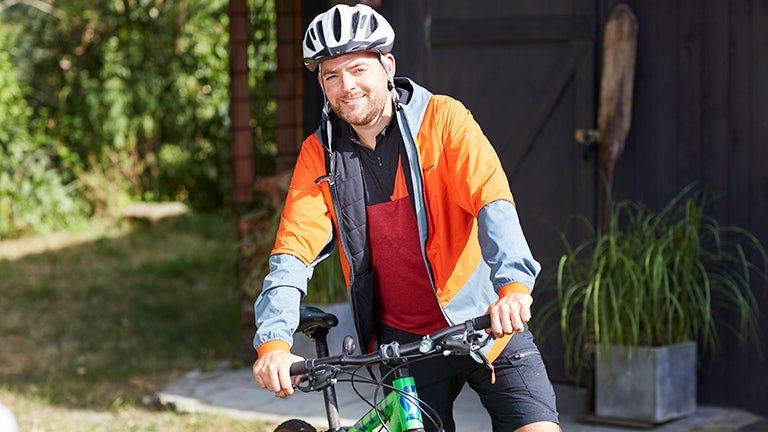How to get back on a bike


You might be nervous about hopping on a bike if it’s been a few years since you last cruised on two wheels. Fortunately, a little know-how can help you pedal confidently again. Start with this quick refresher on how to ride a bike from an outdoor cycling pro, then saddle up and enjoy the ride.
Choose the right bike
Many people mistakenly believe they don’t have the “right” body type for cycling. In reality, they may have just been stuck with the wrong bike. Cycling is a safe and fun activity for people of many proportions, says avid cyclist Jack Todd, policy director at the nonprofit advocacy group Bicycle Colorado. The art is in finding the right bike. Most stock models have aluminum frames built to hold up to 250 pounds, while steel-frame bikes are often better suited to people with heavier bodies. Longer frames offer taller folks more stability and comfort, and vice versa. Research online to find good options, or contact manufacturers and ask for specs.
Focus on your helmet, not fancy clothes
Chances are, you weren’t rocking high-tech cycling attire when you rode bikes as a kid. No reason to start now unless you want to, Todd says. Ditto for footwear: Most flat, close-toed shoes with decent grip suffice for casual riders, he explains. Just make sure your getup doesn’t risk catching in a bike’s chain or wheels. Consider rolling up loose trousers, tucking tied laces into shoes, and avoiding long, flowing skirts, or bottoms with fringe or loose cords.
No matter where or how far you’re riding, do wear a suitable helmet. Helmets should fit snugly and sit level on your head, one to two finger widths above your eyebrows. The chin strap should be tight enough that only two fingers can slide beneath.
Ease in with a balance exercise
Before you hit the road, Todd advises adjusting your saddle so its top aligns with your hip bones. This should enable you to extend your legs almost fully, keeping a slightly bent knee, at the bottom of each revolution—which helps minimise joint strain. Then, get a feel for the brakes and steering: Walk your bike forward to make a few circles, using the handlebars to turn and squeezing the brake levers a few times to acclimate yourself.
For a quick balance refresher, Todd recommends the following exercise: Sit on the bike and grip the handlebars in a comfortable position. Roll forward by pushing off the ground with one foot, then the other foot. Suspend both feet off the ground as you coast forward for a short distance. Once you can do this without wobbling wildy, you’re ready to pedal!
Don’t forget your fuel
Since your body is your bike’s power source, you’ll definitely want to bring enough fluid and snacks to sustain your estimated ride length—or more, to accommodate spontaneous detours. Energy bars, bananas, nuts, or dried fruit are good for portability. Stash snacks and water in a small backpack, or install a water bottle cage on your bike and tuck snacks into your pockets.
Stay comfy as you cruise
To avoid hand, wrist, and elbow discomfort during your ride, change up your grip on the handlebars every so often, while keeping elbows relaxed and bent, Todd says. Some cyclists also have a tendency to hunch up their shoulders toward their ears, which can also lead to pain, so be mindful about keeping your shoulders in a relaxed, natural position, he adds. If your bottom gets numb or sore, scooting forward or backward along the saddle can often help. Persistent discomfort could mean you’d benefit from a different seat.
Play it safe
Before attempting any high-mileage treks, Todd recommends practicing short routes on flat surfaces that have minimal traffic and crowding—for example, by looping around a quiet park path. Once you’re able to pay attention to more than the basics of staying upright, stopping, and turning, consider practicing on a paved hill. This allows you to build your skills without too much interference from vehicles, pedestrians, or other cyclists until you’re skilled enough to handle such challenges, says Todd.
If at any point you end sharing the road with cars, be especially vigilant at intersections with turning vehicles; their blind spots may obscure you, Todd cautions. Other smart safety moves: attaching lights or reflectors to your bike for after-sunset rides and toting a small hand pump in case a tire loses pressure.
Safety also means listening to your body and going at your own pace. So be patient with yourself!
--
This article was reviewed for accuracy in July 2021 by Christi Smith, MS, CSCS, associate manager for science translation at WW. The WW Science Team is a dedicated group of experts who ensure all our solutions are rooted in the best possible research.
